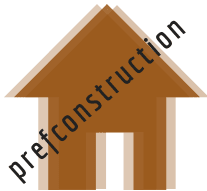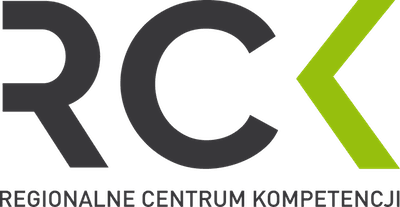Course - "Conducting and implementing construction of houses implemented in wooden skeleton technology using renewable energy sources
COURSE ONLINE
Conducting and implementing construction of houses implemented in wooden skeleton technology using renewable energy sources
Block I – Definition of a prefabricated house
TOPICS:
1. Full prefabrication.
2. Open prefabrication.
3. Materials and tools used during house construction.
4. Insulation of buildings in skeleton structure.
5. Building design.
6. Frame facades of houses.
Block II – Prefabrication of houses using renewable energy
TOPICS:
1. Preparation of the house structure.
2. Installation of the house structure.
3. Types of home insulation.
4. Joinery assembly.
5. Types of renewable energy sources.
6. The use of renewable energy sources in skeletal houses.
This project has been funded with support from the European Commission.
The publications on the Prefconstruction project website reflect only of the author, and the Commission cannot be held responsible for any use which may be made of the information contained therein.

_____________________________________________________________________________
Block I – Definition of a prefabricated house
What is Prefabricated?
Let’s start with what prefabs are. They are ready-made, factory-made building elements that, when combined with other elements (on the construction site), will form the whole block of the house.
Structural solid wood is used to manufacture the main parts of the prefabricated element – skeleton elements.
It is a modern, certified construction material, designed among others with skeletal construction in mind.
First of all, careful preparation of the elements. And so the wood undergoes the drying process in special chambers (up to approx. 16%), it is further sorted, four-sided planed and milled.
Why?
Mainly to eliminate humidity. In turn, its lack will translate into leveling the tendency to change the shape of beams and ensure full dimensional stability of each element.
Wood gives designers full spectrum of choice of length and width of used beams. Their characteristic feature are small “teeth” (finger joints) that connect the elements with each other.
In addition to wood, high-quality MFP building boards and an active vapor barrier are used to create the prefabricated element, preventing condensation.
Structural elements are prepared and combined in dry production halls, which eliminates the effects of harmful factors such as moisture or freezing of materials is impossible.
Elements undergo internal quality control as early as at the production stage.
Each prefabricated element is made with the utmost care and attention to detail and in accordance with the documentation.
Definitions of frame houses
Frame house is wooden house with frame construction. The skeleton is the layout of the boards in the axial distance. The finished structure stiffened from the outside with panels. Frame house consists of a supporting framework and a filling. A supporting construction consists of a system of posts resting on a horizontal beam – a sleeper anchored to the foundation. The space between the posts is filled with insulating material.
Main definitions:
- skeletal technology – it is an one among many of techniques of houses construction. Undoubtedly fastest. In the case talk through prefabricate relies on the assembly of ready structural members, to the earlier prepared foundation.
- light wooden − carcass technology of construction of small and average single-family buildings, popular in Canada, the USA and Scandinavian countries.
- skeletal house – it is a house, of which the supporting structure of the building is made of wood.
- houses in the wood frame construction these are the modern houses, of which a wooden skeleton constitutes structures.
- Canadian houses – these are built houses in the technology of the light wooden carcass.
- Canadian houses, it’s buildings built based on the long-lasting and flexible wooden outline, filled up with layers of the needled cloth and plates or plaster-carton.
Prefabricated house
A finished house is a house whose wall, ceiling and roof elements were manufactured in a prefabrication firm, which after delivering elements for construction allows it to be assembled on a previously prepared foundation to a closed state, with built-in windows, entrance doors and a roof in a short time.
_____________________________________________________________________________
_____________________________________________________________________________
Advantages and disadvantages of prefabricated houses
Expert’s opinions and contribution in project field
_____________________________________________________________________________
3. Materials and tools used during house construction
Materials and tools used during house construction
Materials for the construction of prefabricated houses
_____________________________________________________________________________
4. Insulation of buildings in skeleton structure.
To achieve maximum thermal comfort in a frame house, well-insulated walls and ceilings as well as joints between structural beams are needed.
The base of the wall in a frame house is an outer sheathing made of wood-based panels. From the outside, they should be protected with vapor permeable windproofing foil, which – as the name implies – protects against wind, but also against moisture. In addition, you can use a wood fiber board or mineral wool. The outer finish of the wall is usually a wooden or vinyl facing.
Walls are lined from the inside with a layer of thermal insulation, remembering to protect it with a vapor barrier film, which will protect it from absorbing moisture from inside the house.
Insulation of buildings in skeleton structur
_____________________________________________________________________________
Timber Frame House Designs DANWOOD
_____________________________________________________________________________
A frame house may not look like a wooden house at all. Its external walls are often finished with the same materials as traditional brick houses: it is plastered, covered with tiles imitating clinker or covered with clinker. Of course, you can also cover them with siding or boards (formwork) – materials typical for lightweight buildings. Combining different facades gives interesting aesthetic effects. The most common combination is thin-layer plaster and clinker tiles. Plaster with wooden formwork and even siding with clinker is also combined.
The choice of facade material is a matter of taste, but it is worth remembering the significant differences in the cost of facade made of different materials, as well as the fact that they differ in the degree of complexity of works and their time consumption.
There are the following types of facades in prefabricated houses:
_____________________________________________________________________________
Block II – Prefabrication of houses using renewable energy
1.Preparation of the house structure.
Wooden construction is the energy-efficient construction of the future – it does not affect the ecological balance and is a highly effective insulator, providing excellent living conditions.
Health benefits are the main advantage of wooden houses. Natural wood has the ability to self-regulate humidity and creates a specific, pleasant microclimate in the interior of the building.
Prefabricated houses with a wooden skeleton system, have a significantly prevailing ratio of thermal insulation over traditional construction methods, with significantly smaller wall thickness.
Wooden houses have an extremely short time needed for their implementation. Prefabrication allows erecting finished houses in just a few days.
Excluding earthworks, no wet work is needed for the construction of wooden houses, which makes them stand out from other technologies due to their lack of seasonality.
The low weight of wooden houses reduces foundation costs, which reduces the cost of the entire investment.
The unquestionable advantage of wooden houses is the ability to easily rebuild and modernize, which has a significant impact on their functionality in the long run.
Excellent thermal insulation properties of frame houses allow for considerable savings in terms of expenses related to heating the building.
Energy saving skeleton wooden houses
_____________________________________________________________________________
2. Installation of the house structure.
Installation of the house structure
_____________________________________________________________________________
Comparing insulation types for a wooden house construction
_____________________________________________________________________________
Window frames should be embedded in a way that ensures full tightness to air, water and moisture penetration.
Window opening protection against air penetration and rainwater penetration.
Window and door carpentry should be installed after installing the windproofing foil rolled over the window opening.
After setting the window, the space between the window frame and the window frame should be tightly filled with insulating material, e.g. polyurethane foam. After the foam has dried and cut off its excess, the space filled with foam should be secured with adhesive tape (e.g. roofing tape) attached to the wall and frame. This solution will not only fully ensure air tightness, and will also protect the window opening against possible penetration of rainwater into the wall.
Wind insulation installed on the outer sheathing of the walls, mounted maintaining full tightness of the coating, in combination with a vapor barrier film should provide protection of the building against air penetration.
To ensure full protection of the building against external ventilation, it is necessary to connect the windproofing foil with the steam retarder foil installed inside the building.
_____________________________________________________________________________
5. Types of renewable energy sources.
Types Of Renewable Home Energy
_____________________________________________________________________________
6. The use of renewable energy sources in skeletal houses.

_____________________________________________________________________________
This project has been funded with support from the European Commission.
The publications on the Prefconstruction project website reflect only of the author, and the Commission cannot be held responsible for any use which may be made of the information contained therein.


